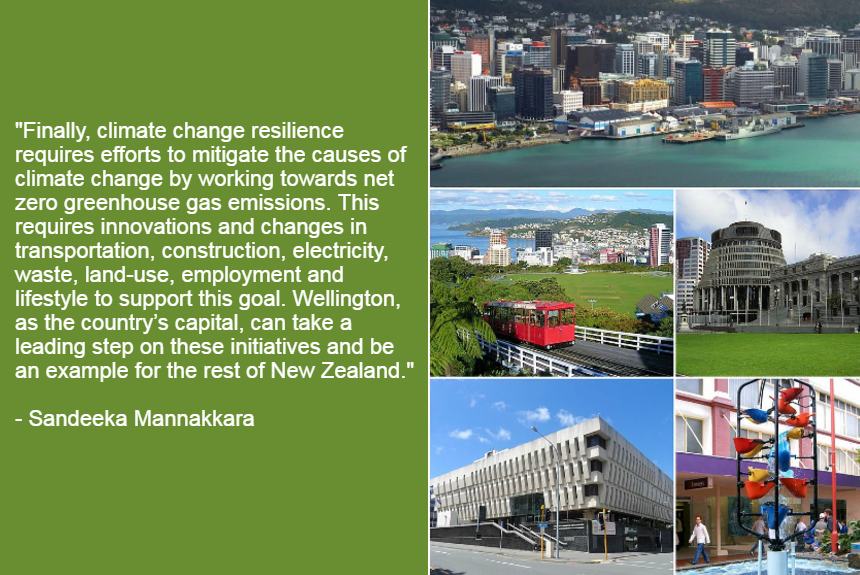“Without panic, there is no urgency”, a comment from the Stuff article on Wellingtonians’ attitude toward keeping calm rather than mustering the urgency and willingness to tackle their earthquake and climate change risks.
The Kaikōura 7.8 magnitude earthquakes that damaged many of its buildings and rendered some unfit to use have sent shocks to Wellington.
The article says that Wellingtonians should recognise that they are facing risks from the quakes and climate change and should start taking steps to prepare for it.
Stuff NZ obtained the views of four experts on the risks Wellingtonians face and their recommendations. Here are some snippets of what they said.
Sandeeka Mannakkara, Lecturer in Climate Engineering, University of Auckland,
Sandeeka talks about climate change and how it will affect our cities, particularly the risks it will bring to Wellington.
She explains how the city can prepare for it by investing in resilience, identifying hazardous areas and, limiting or refraining from building or developing the site, adopting new technologies and materials for the construction of assets.
She concludes:
“Finally, climate change resilience requires efforts to mitigate the causes of climate change by working towards net zero greenhouse gas emissions. This requires innovations and changes in transportation, construction, electricity, waste, land-use, employment and lifestyle to support this goal. Wellington, as the country’s capital, can take a leading step on these initiatives and be an example for the rest of New Zealand. “
Ian Cassels, Property Developer – The Wellington Company
He quips that Wellington is not on the list of “Large New Zealand Earthquakes” since 1848, but it gets to feel other people’s quakes. He narrates the damages in Wellington from the Kaikōura quakes and how the city’s engineers are outnumbered for the work needed.
He advises that Wellington should adopt the latest technology employed in Tokyo and California, where buildings can still be used after the earthquakes.
He admits earthquakes are an apparent weakness but do not need to be. He adds that Wellington does not adequately monitor their buildings during quakes and learn from their performance. He suggests planning for a decent earthquake would generate savings each year so they won’t suffer a damaging earthquake.
Iain White, Professor of Environment, University of Waikato.
Professor White shared his thoughts on preparing efficiently for climate change. He says the cost of infrastructure to withstand extremes and catastrophic events will be expensive, but “in reality will probably be more localised drainage failures,” he says.
The challenge, he says, is not just to design a city that can cope with extremes due to climate change but also to develop a decision-making process to protect its people and assets.
Hamish McKenzie, President of the Structural Engineering Society of New Zealand.
He points out that the New Zealand Building Code’s primary objective is to protect people’s lives and how structural engineering design philosophy works around “life safety”.
Hamish says, “the perception seems to be that buildings should be used immediately following earthquakes, and it’s an engineering failure if that isn’t possible.”
He explains that engineers are keen to promote a better understanding of what they are trying to achieve and what building users need and expect.
He adds that Engineering New Zealand and the Structural Engineering Society are working with the government to promote “Low Damage Design” outcomes to go beyond the safety code and lead to more resilient buildings following the quakes.
To read the entire article, please CLICK the button below:
PHOTO CREDIT: By jackol, Midnighttonight, Brenda Wallace, Brett Taylor, Pear285 – Multiple files licensed for reuse and modification (clockwise from top):File:Lambton_Harbour,_Wellington.jpg by jackol from FlickrFile: Bowen House Beehive Parliament.JPG by Midnighttonight en.wikipediaFile:The Bucket Fountain, Wellington.jpg by Brenda Wallace at en.wikipediaFile:Wellington NZ-cablecar-topview.jpg by Brett Taylor from FlickrFile:National Library of New Zealand Wellington 2015.jpg by Pear285, CC BY-SA 3.0, Link



Leave a Reply